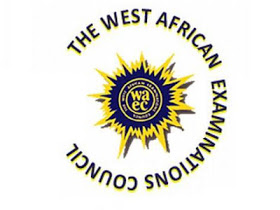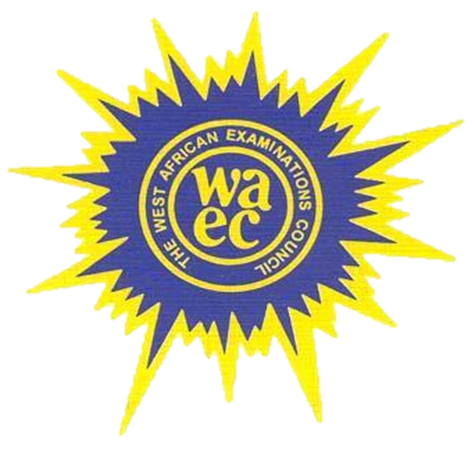NECO 2019 Commerce Obj And Essay Answer – June/July Expo «

WELCOME TO AYOSTUFFS NECO 2019
INVITE YOUR FRIEND AND FAMILY TO AYOSTUFFS.BLOGSPOT.COM WE POST SURE ANSWER
ALWAYS SUBSCRIBE IF YOU WANT FAST ANSWERS/BEFORE THE EXAM…
WE FOCUS MORE ON THE SUBSCRIBERS
BECAUSE THEY ARE THE MORE SERIOUS ONE..
FOR MORE CONTACT US WHATSAPP 07060807249
===============================
KEEP REFRESHING IN EVERY 5MIN
==============================
Commerce Obj
1-10: ACAEDABDAC
11-20: EBEDEDCDBC
21-30: ADAABCDBAC
31-40: BADBEEEBCD
41-50: EAEECDECED
51-60: CBEBADEBBB
*NECO COMMERCE ANSWERS*
_(You are required to answer ANY FIVE)_
(1a)
Multilateral trade is the type of international trade in which a country trades with many other countries. This ensures international division of labour. It is also type of trade inwhich many countries exchange goods and services eg Nigeria trade with USA,Britain and Russia
(1b)
[PICK ANY SIX]
(i) In International trade,Goods are moved beyond geographical boundaries
While
In Internal trade,Goods are moved within the same country
(ii)International trade involves the use of foreign currency or foreign exchange.
While
Internal trade is settled in the local or national currency.
(iii)In international trade,There is language barrier.
While internal trade,There is no language barrier.
(iv)In international trade,More complex documentation is required.
While
In internal trade,Less documentation is required.
(v)In international trade,Different weight and measures are in use.
While
In internal trade,The same weight and measures are in use.
(vi)In international trade,Different social standards,rules and regulations are in use
While
In internal trade ,The same social standard,rules and regulations are in use.
(vi)In international trade ,Transport cost is higher.
While
in Internal trade ,Transport cost is lower
(viii) international trade involves government control and use of trade restrictions in order to protect the economy
While
Internal trade is not face with such Artificial trade restrictions and goods move freely within a country
(1c)
[Pick ANY FOUR]
(i)Nigeria
(ii)United state of America(USA)
(iii)Britain
(iv)Russia
(v)China
=========================================================
(2a)
Direct production is the type of production in which an individual produces goods and services only for family use or consumption
While
Indirect production is the type of production in which goods and services are produced in large scale,mainly for sale or exchange for other needs.
(2b)
[PICK FOUR]
(i)Availability of goods and services
(ii)Improvement in standard of living
(iii)increase in wealth of people
(iv)increase in export potential
(v)Acquisition of skills
EXPLANATIONS:
(i)Availability of goods and services: Production helps to ensure that goods and services are made available for use by human beings
(ii)Improvement in standard of living: Production helps to ensure adequate improvement in the standard of living of the people
(iii)Increase in wealth of people: Production assists people to accumulate wealth as a result of continuous employment
(iv)Increase in export potential: Production also assists a state or nation to boost their export of goods and services to other nation
(v)Acquisition of skills: The engagement of people in production make them acquire special skills.
=================================
*(NUMBER 3)*
(3i)Branding:-Branding means that a form gives a distinctive name to its product. In other words,branding is a general term covering brand name,designs and symbols which may be used by a producer to distinguish its goods from that of other organization. Branding is used to prevent product adulteration.
(3ii)Credit Card:-Credit card is a card issued by some large stores to approved applicants which enables a holder to obtain goods and services on credit at specified suppliers up to an agreed amount. The holder has a borrowing limit. It is advantageous in the sense that,it economises the use of cash eg Eurocard,Valuecaed,Smartcard etc
(3iii)Packaging:-Packaging involves the development of a container and a graphic design for a product.A package can be a vital part of a product. It can make the product more Versatile,safer or easier to use. Packaging influences consumers attitude which in turn affect their purchasing decision
(iv)Roadside Trading:-Roadside Trading is a trade inwhich traders display their wares along the streets,road or outside the school gates,companies,offices in towns and cities .These traders sell variety of goods eg cloth,shoes,bread,snacks etc along major road. Passersby are their major customers.
(3v)
Vending machine:-Vending machine is a retails outlet that automatically dispenses pre packaged items such as drinks stored in it whenever the appropriate value coin is inserted. In order words,Vending machine involves the sale of goods to ultimate customers through coin-operated machines. They are located in area where large number of people congregate such as offices,schools and sports area
========================
(4)
[PICK ANY FIVE]
(i)Collection of Revenue
(ii)Supervision of Warehouse
(iii)Compilation of statistical Records
(iv)Prevention of smuggling
(v)Supervision of foreign Trade
(vi)Enforcement of Ban
(vii)Provision of Quarantine Facilities
(vii)Completion of Documents
EXPLANATIONS:
(i)Collection of Revenue: It assesses and collects Revenue from tariffs and excise duties
(ii)Supervision of Warehouse: The customs department supervises bonded warehouse
(iii)Compilation of statistical Records: The department compiles statistics on export andu import trade which are supplied to the government
(iv)Prevention of smuggling: The custom authority prevents smuggling and sizes contraband goods
(v)Supervision of Foreign Trade: The customs Department supervises foreign trade by ensuring that only licensed goods are imported or exported
(vi)Enforcement of Ban:-The customs department ensures that ban on prohibited goods are enforced
(vii)Provision of Quarantine Facilities: Customs department provides appropriate quarantine facilities for the importation of livestock
(viii)Completion of Documents: The customs department ensured that customs declaration forms and others documents are completed
==================================================
(5a)
Money may be defined as anything that is generally acceptable as a medium of exchange for making payments,settlement of debts or other business obligations
(5b)
[PICK ANY SIX]
(i)Money is generally acceptable while other commodities are not
(ii)Money is portable while other commodities may not be portable
(iii)Money is relatively scarce while other commodities are not
(iv)Money is homogeneous while other commodities are not
(v)Money is durable while other commodities are not
(vi)Money is stable while other commodities used in trade by barter are not
(vii)Money is divisible into small units while other commodities are not
(viii)Money is easily recognisable by people while other commodities are not
(ix) Money has no intrinsic value while other commodities have intrinsic values
(5c)
[PICK ANY FOUR]
(i)Acceptance of deposits
(ii)Safe keeping of Valuables
(iii)Lending of money to customers
(iv)Act as Agent of payment
(v) They solve problem of foreign exchange
(vi)They Render credit transfer services
(vii)They issue Traveller's cheques
(viii)They act as Referees
(ix)They give financial advice to their customers
================================================
(6)
[PICK FIVE]
(i)Risk bearing
(ii)Financing
(iii)Storage/Warehousing
(iv)Buying/selling/Exchange
(v)Grading and standardizing
(vi)Marketing information research
(vii)Transportation
(viii)Pricing
EXPLANATIONS:
(i)Risk bearing:-This involves anticipating business risks and taking appropriate measures to reduce their impact by taking the necessary cover
(ii)Financing: This covers the provision of funds throughout the period of production to the point of selling through loans and credit facilities
(iii)Storage/Warehousing: This makes it possible for goods to be produced ahead of demand so that they can be available when needed
(iii)Buying/selling/Exchange: This covers purchase of raw materials and goods from so many sources and transfer of ownership of such goods to the consumer at the right quality
(iv)Grading and standardizing: It involves ensuring that the goods conformed to the required standard and quality with respect to shape,colour,taste etc
(vi)Marketing information Research: This involves collection of information from many sources and dissemination of producers and distributors
(vii)Transportation: This covers movement of goods from where they are produced to the point where they are required
(viii)Pricing: Marketing,assisting in fixing price at a level reasonable enough to give profit to the company.
===================================================
(7i)
Amalgamation: Amalgamation is the combination or coming together of two or more previously independent firms to form one large firm.It is the unification of two or more organizations to form a new one. Once Firm amalgamate,they lose their former independent identities and control to the new firm
(7ii)
Backward integration: Backward integration refers to the process in which a company purchases or internally produces segments of its supply chain. In other words, it is the acquisition of controlled subsidiaries aimed at the creation or production of certain inputs that could be utilized in the production.
(7iii)
Consortium: Consortium is an association of two or more individuals, companies,organizations or governments (or any combination of these entities) with the objective of participating in a common activity or pooling their resources for achieving a common goal.A very good example is the consortium of banks that gave loan to African Independent Television (AIT)
(7iv)
Parent company: Parent company is a company that owns enough voting stock in another firm to control management and operation by influencing or electing its board of directors. It also refers to as a holding company which has control over a number of firms known as subsidiaries. it is also a company which controls several subsidiary companies
(7v)
Trust: This is an amalgamation of different competing firms in different lines of businesses under a single control. In Trust,the firm will retain their identity but the trustee will take over the management and control. It is vertically integrated in nature and the amalgamated firms are brought under a central control. Certificate will be issued to all members
===================================================
(8a)
Commercialisation is a policy geared towards making state-owned enterprises to become more efficient and profit oriented. This policy makes it possible for public enterprises to become more viable and effective.
(8b)
(i) Efficient management
(ii) To generate more Revenue
(iii) Reduction in public expenditure and participation of private individual
(iv) Autonomy of enterprises and Removal of unproductive enterprises
EXPLANATIONS:
(i) Efficient management: Commercialization help government to develop a good and efficient management of public and private enterprises
(ii) To generate more Revenue: Commercialisation assist the government to generate more Revenue
(iii) Reduction in public expenditure and participation of private individual: Commercialisation help in reducing public expenditure on enterprise and also assist individuals to participate in economic activities through ownership of enterprises
(iv) Autonomy of enterprises and Removal of unproductive enterprises: Commercialisation helps to provide autonomy for the government/private enterprises and also assist to remove or divest unproductive enterprises in the economy
================================
*(number 9)*
(9a)
*[PICK FOUR]*
(i)Planning enables an organization to set up goals and target
(ii)It helps to accomplish the set of goals and objective
(iii)Planning helps in setting up policies, procedures and schedules for meeting the goals
(iv)Planning leads to acceptable decision
(v)It helps in forecasting the activities of an organization over a period of time
(9b)
(i)To make profit
(i)To contribute to growth of economy
(ii)To create employment opportunities
(iii) To bring innovations
(9c)
*[PICK FOUR]*
(i)Setting of standards
(ii)Measuring progress with standard
(iii)Interpretation of results
(iv)Taking corrective actions
(v)Directing or influencing
(vi)Supervising and staffing
COMMERCE ANSWER LOADINGS......



Comments
Post a Comment